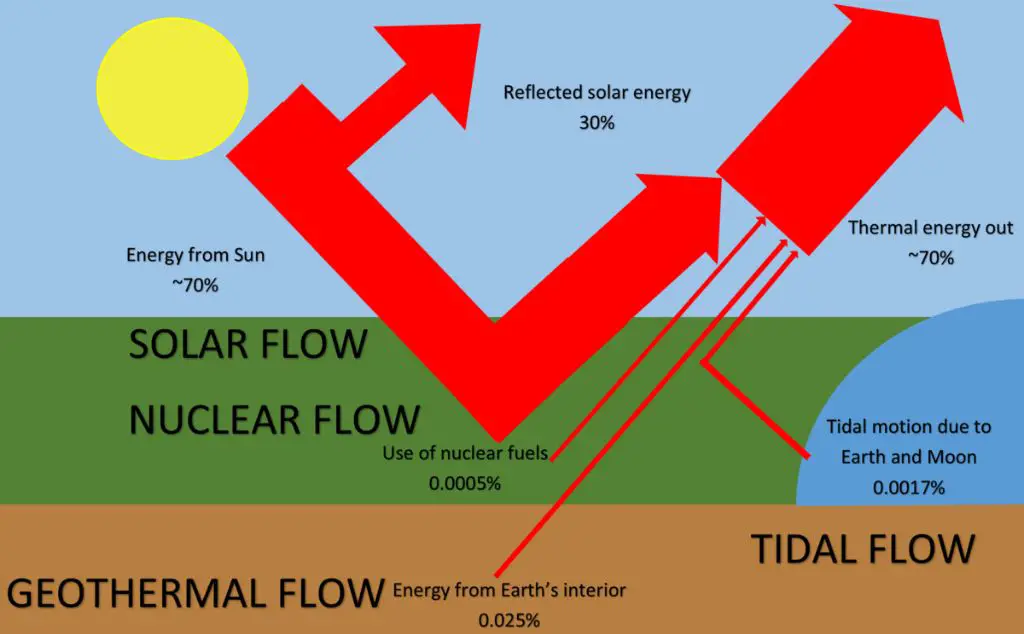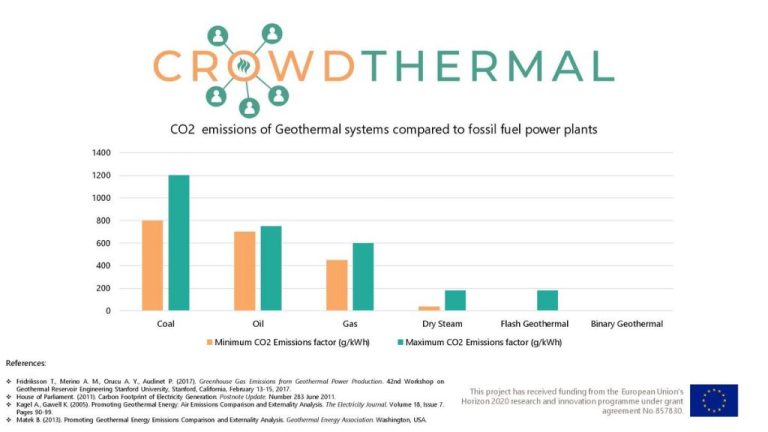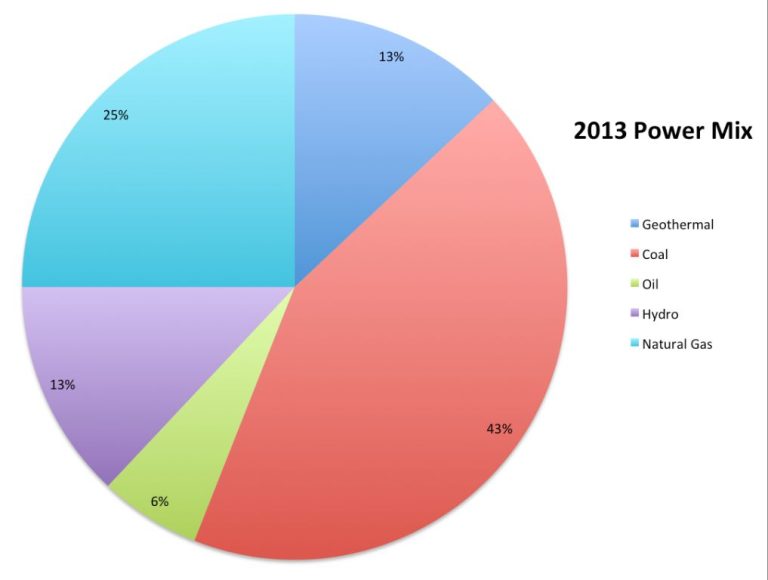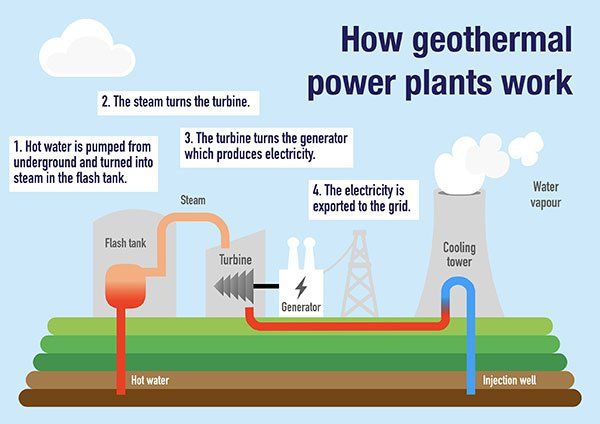Where Do Natural Energy Resources Come From?
Natural energy resources are sources of energy that come directly from nature and can be naturally replenished. These resources include solar, wind, hydropower, geothermal, bioenergy, ocean energy, hydrogen energy, and nuclear energy. Natural energy resources are important because they provide cleaner alternatives to fossil fuels like coal, oil, and natural gas, which pollute the environment when burned. Using more natural energy resources can reduce greenhouse gas emissions and help mitigate climate change. These resources are also considered renewable, meaning they can be replenished naturally within a human lifespan. Relying more on natural energy resources and less on finite fossil fuels promotes energy sustainability and independence for future generations.
Solar Energy: The Sun as a Source of Renewable Energy

The sun is an incredibly powerful natural energy source that has long been harnessed for human use. The solar energy that reaches the Earth’s surface provides more energy in one hour than the world consumes in an entire year (1). When captured properly, the sun can be converted into useful forms of energy like electricity and heat. Solar technologies today primarily convert sunlight into electricity using photovoltaic solar panels. Solar electricity offers several advantages but also has some downsides to consider.
Photovoltaic (PV) solar panels are made up of solar cells containing a semiconductor material that absorbs photons from sunlight and converts them into electricity (2). Modern solar panels are durable, require little maintenance, and can last over 25 years. Solar power is renewable – the sun provides an unlimited supply of energy. It is also clean energy that does not release any pollutants.
Solar energy has some limitations. It is an intermittent energy source, producing power only when the sun is shining. Energy storage using batteries can help address this issue. Solar power is also currently not the cheapest form of electricity in all locations. However, costs have fallen dramatically in the last decade making solar competitive with conventional power (3). Overall, solar power provides a clean, renewable energy source that has tremendous potential to help meet our electricity needs.
(1) https://www.energy.gov/eere/solar/articles/advantages-and-challenges-solar-energy
(2) https://www.energy.gov/eere/solar/how-photovoltaic-cells-work
(3) https://www.enelgreenpower.com/learning-hub/renewable-energies/solar-energy/advantages-solar-energy
Wind Energy
Wind energy is one of the fastest-growing renewable energy sources in the world. Wind turbines convert the kinetic energy of wind into mechanical power, which is then converted into electricity. Some key facts about wind energy:
In 2021, wind power generated over 380 billion kWh of electricity in the United States, powering the equivalent of 42 million American homes (1). Wind provided over 10% of total U.S. electricity generation in 2021 (2). Globally, wind power capacity increased by 93 GW in 2021, reaching 837 GW total (3).
Wind turbines work by using blades that are designed to capture the wind. As the wind blows past the blades, the flow of air causes the blades to rotate. This rotational motion spins a shaft inside the turbine, which connects to a generator to produce electricity (4).
Some of the advantages of wind power include its low operating costs once installed, zero emissions, and domestic abundance in many regions. Wind is also one of the lowest priced renewable energy technologies (5). Some of the disadvantages include intermittency issues, wildlife impacts, aesthetic concerns, and location constraints (6).
Overall, wind energy is poised for continued strong growth worldwide as a sustainable option for electricity generation with minimal environmental impacts.
Sources:
(1) https://www.eia.gov/energyexplained/wind/electricity-generation-from-wind.php
(2) https://cleanpower.org/facts/wind-power/
(3) https://www.iea.org/reports/renewables-2021/wind
(4) https://www.energy.gov/eere/wind/how-do-wind-turbines-work
(5) https://www.eia.gov/energyexplained/wind/advantages-and-challenges-of-wind-energy.php
(6) https://www.nrel.gov/docs/fy09osti/45834.pdf
Hydropower
Hydropower uses moving water to generate electricity. The most common type of hydropower plant uses a dam on a river to store water in a reservoir. Water released from the reservoir flows through a turbine, spinning it, which in turn activates a generator to produce electricity. There are other types of hydropower plants as well such as run-of-river plants, pumped storage, and tidal power.
Hydropower has several advantages. It is a renewable energy source that produces no direct waste or pollution. Hydropower is also flexible – plants can ramp up and down quickly to adapt to shifts in electricity demand. Additionally, reservoirs provide recreational opportunities like boating, swimming and fishing. However hydropower also has some disadvantages. Dams can obstruct fish migration and change ecosystems. Reservoirs flood large areas of land. And droughts can decrease a hydropower plant’s generation.
Geothermal Energy
Geothermal energy utilizes heat from inside the Earth to produce energy. There are three main types of geothermal power plants:
- Dry steam plants that use steam from fractures in the ground directly to turn turbines
- Flash steam plants that pull hot water into low-pressure tanks and use the resulting flash steam to power turbines
- Binary cycle plants that pass hot water through heat exchangers to heat a secondary fluid that vaporizes and drives turbines
Some of the pros of geothermal energy include:
- It provides constant baseload energy without any fluctuations in supply or fuel costs
- It has very high capacity factors since the resource is always available
- It produces negligible greenhouse gas emissions compared to fossil fuels
- It requires very little land compared to other renewable energy sources
Some of the cons include:
- High upfront capital costs for drilling and plant construction
- Limited to areas with adequate underground heat and fluid availability
- Possibility of localized subsidence or induced seismicity if not managed properly
- Requires cooling water that may be limited in arid regions
Bioenergy
Bioenergy comes from plant and animal matter and can be used to produce transportation fuels, electricity, and heat. The main sources of bioenergy are:
- Wood and wood processing wastes – from forestry and sawmills
- Agricultural crops and waste materials – corn, sugarcane, wheat, soybeans
- Food, yard, and wood waste – municipal solid waste and landfill gas
- Animal manure and human sewage – can produce biogas
There are two main types of biofuels produced from biomass:
- Bioethanol – made from fermenting starch or sugar crops like corn, sugarcane, or wheat
- Biodiesel – made from vegetable oils, animal fats, or recycled greases
Biomass can be converted into energy through:
- Direct combustion – burning wood, crops, waste to produce heat
- Thermochemical process – gasification and pyrolysis convert biomass into syngas or bio-oil
- Biochemical process – anaerobic digestion of organic matter produces biogas
- Extraction – producing vegetable oil for biodiesel or fermenting sugars into ethanol
The key benefits of bioenergy include:[1]
- Renewable and sustainable energy source
- Reduces dependence on fossil fuels
- Lower greenhouse gas emissions compared to fossil fuels
- Contributes to energy security and local economies
Potential disadvantages include:[2]
- Competes for land and water resources used for food crops
- Some biofuels may increase emissions depending on production
- High costs compared to conventional fuels
- Unsustainable farming practices can damage soil and ecosystems
Ocean Energy
The oceans cover over 70% of the Earth’s surface, making them a vast natural resource for generating renewable energy. The two main forms of ocean energy are wave energy and tidal energy.
Wave energy harnessing devices capture the energy of ocean surface waves and convert it into electricity. Different designs of wave energy converters that are being developed include:
- Point absorbers – Floating structures that absorb wave energy from all directions
- Attenuators – Long floating structures oriented parallel to the direction of the waves
- Oscillating water columns – Partially submerged structures, open to the water below, that use wave action to compress air to turn a turbine
According to the National Renewable Energy Laboratory (NREL), “Waves are more predictable and reliable than solar or wind energy, and they could power hard-to-reach locations, like coastal communities andDefense Department installations” (NREL).
Tidal energy utilizes the rise and fall of tides to generate electricity through tidal stream generators, tidal barrages, and dynamic tidal power.
While ocean energy technologies are still under development with only a few small-scale systems in place, they offer great potential as a clean, renewable energy source. Once the technologies become more advanced and cost-effective, ocean power could make a significant contribution to the world’s electricity supply, especially for coastal regions.
Challenges for ocean energy include the corrosive effects of seawater exposure on technology, impacts to marine life, high costs compared to other renewables, and the variable nature of wave and tidal patterns. However, research is underway to overcome these hurdles.
Hydrogen Energy
Hydrogen is considered an energy carrier, like electricity, rather than an energy source. To create hydrogen fuel, other energy sources are needed to extract it from compounds that contain it. Many renewable and non-renewable energy sources can be used for this, including natural gas, nuclear power, biomass, and renewable power like solar and wind. Hydrogen can then carry and deliver usable energy in electricity and heat through fuel cells. Hydrogen fuel cells are electrochemical devices that combine hydrogen with oxygen to produce electricity, with heat and water as the only byproducts.
Fuel cells are about 40-60% efficient at converting the chemical energy in hydrogen to electricity, which is roughly 2 to 2.5 times more efficient than an internal combustion engine. However, when considering the energy needed to extract, store, and deliver the hydrogen, the total well-to-wheels efficiency of hydrogen vehicles working off the current electric grid is roughly the same as gasoline vehicles. Significant infrastructure and production advances are still required for hydrogen to be a mainstream energy carrier.
The potential benefits of hydrogen energy include reduced greenhouse gas emissions since it does not emit CO2 when used. It also provides energy independence and security if produced domestically from sources like renewables and nuclear energy. Challenges remain around the high costs of electrolysis to produce it and distribution infrastructure to deliver it.
Nuclear Energy
Nuclear energy comes from the splitting (fission) or merging (fusion) of atomic nuclei. The process of nuclear fission generates heat that is used to boil water, produce steam, and spin a turbine to generate electricity in nuclear power plants. Nuclear fusion is not yet used to generate power, but research is ongoing to harness fusion for energy production in the future.
In nuclear fission, atoms of nuclear fuel such as uranium or plutonium are split into lighter atoms, releasing energy. This energy heats water and creates steam that spins a turbine to generate electricity. Nuclear power plants use nuclear fission to produce power with almost no air pollution or carbon dioxide emissions. However, concerns remain over the safe disposal of nuclear waste and accidents at nuclear facilities.
As of 2020, there are 440 operational nuclear reactors in 32 countries, supplying about 10% of the world’s electricity. Nuclear energy has one of the lowest mortality rates per unit of electricity generated compared to other energy sources according to Our World in Data. However, major nuclear accidents can have significant impacts on the environment and human health.
The main advantages of nuclear power are its low operating costs, zero greenhouse gas emissions, and reliability as an energy source not subject to changes in weather or climate. The main disadvantages are the risk of nuclear accidents, disposal of radioactive waste, and association with nuclear weapons proliferation.
Conclusion
In summary, there are many types of natural energy resources that can provide clean, renewable power. The main renewable energy sources we discussed were solar, wind, hydropower, geothermal, bioenergy, ocean, and hydroelectric power.
The benefits of using these renewable resources over fossil fuels is that they do not put greenhouse gases into the atmosphere, which contributes to climate change. Renewable energy sources are also sustainable over a long period of time, unlike finite resources such as coal, oil and natural gas.
It’s important for countries to diversify their energy resources and increase the percentage that comes from renewables. Over-reliance on one type of energy, such as fossil fuels, makes a country vulnerable to price shocks and shortages. By adopting a mix of solar, wind, hydroelectric and other renewables, nations can ensure a stable, affordable and environmentally-responsible energy supply for their citizens.
The transition to cleaner energy will require significant investment and policy changes, but the long-term payoff will be well worth it. Renewable energy can help create jobs, improve public health, reduce pollution, and set us on a more sustainable path for the future of our planet.





